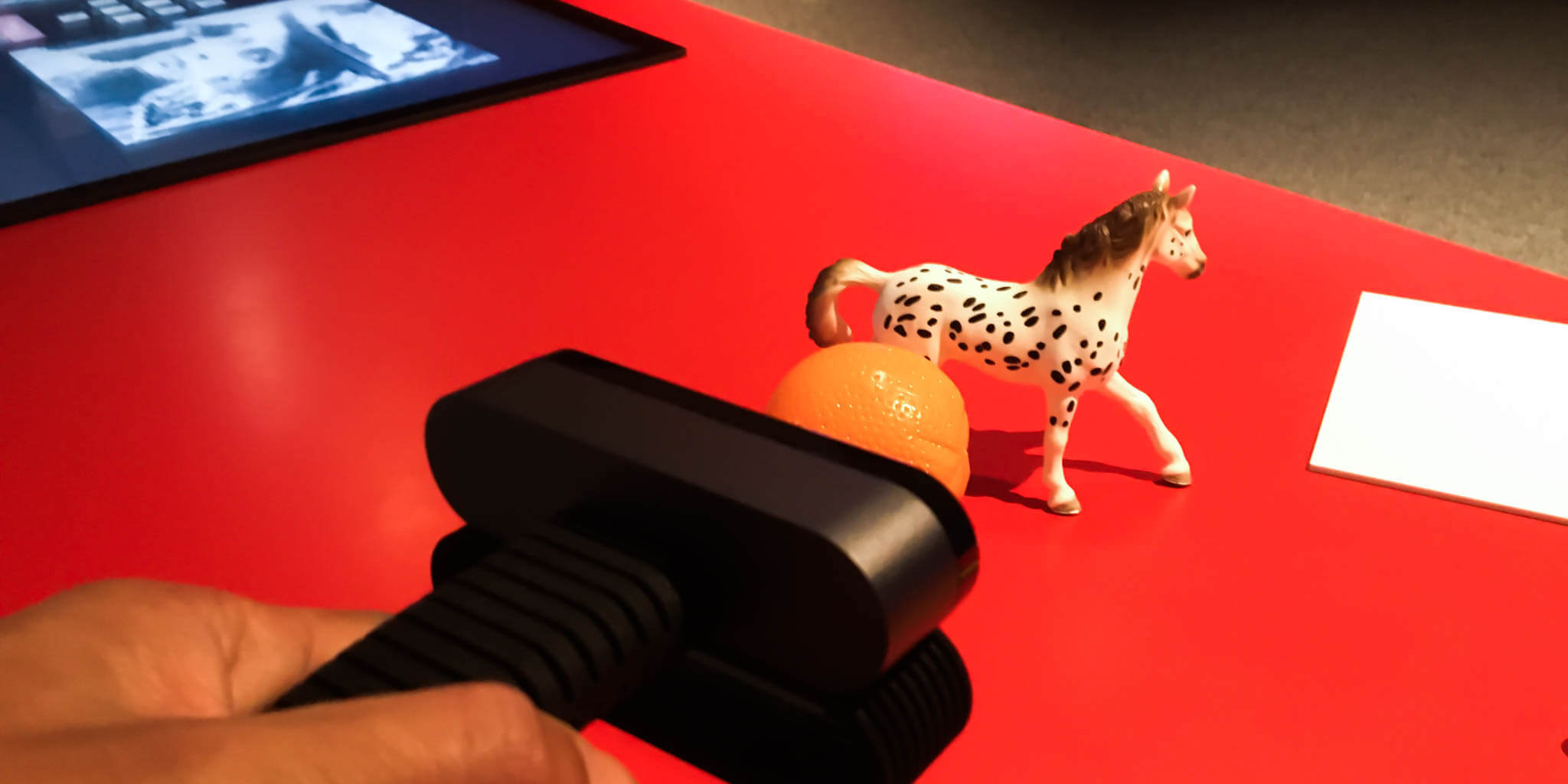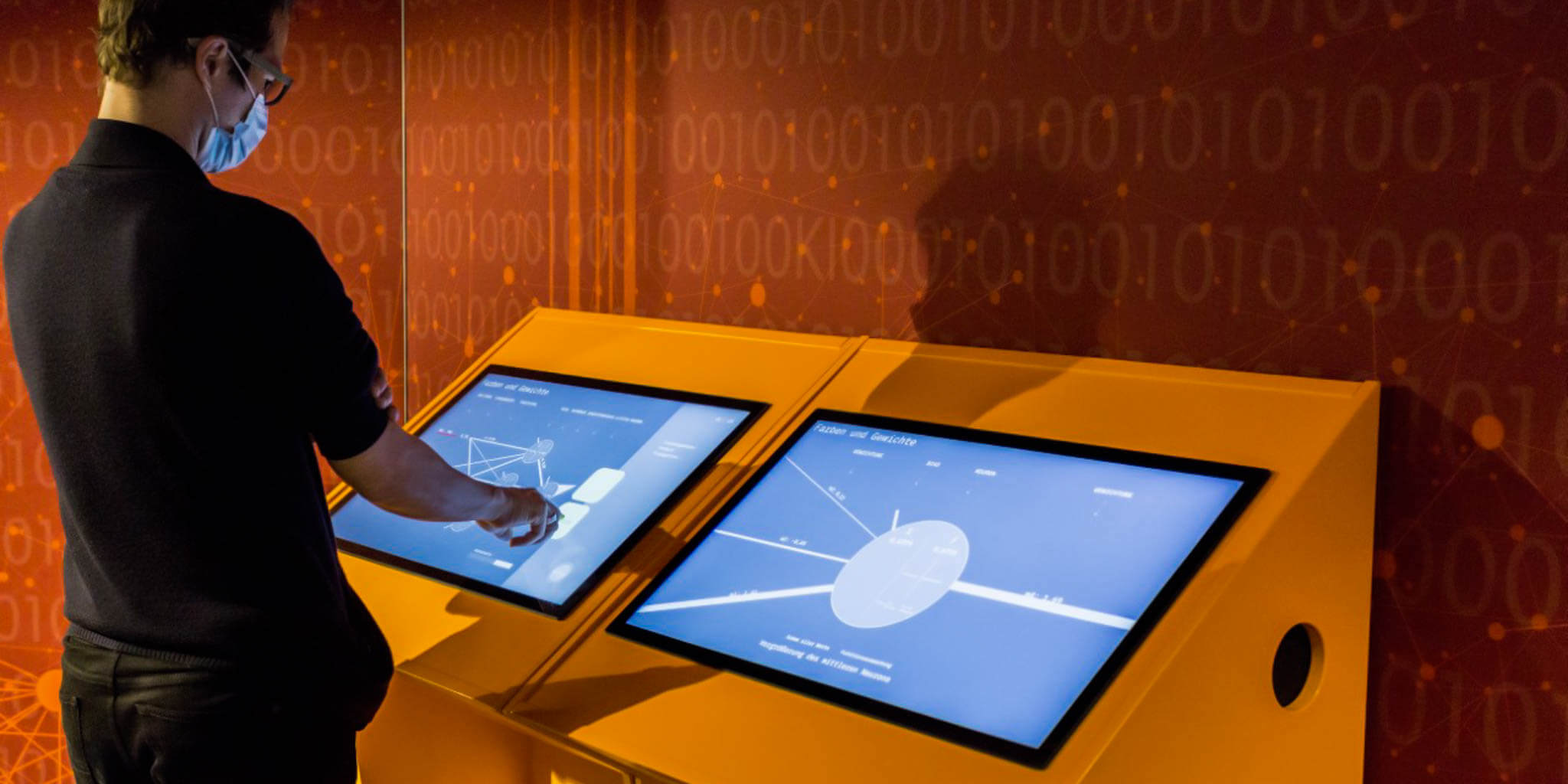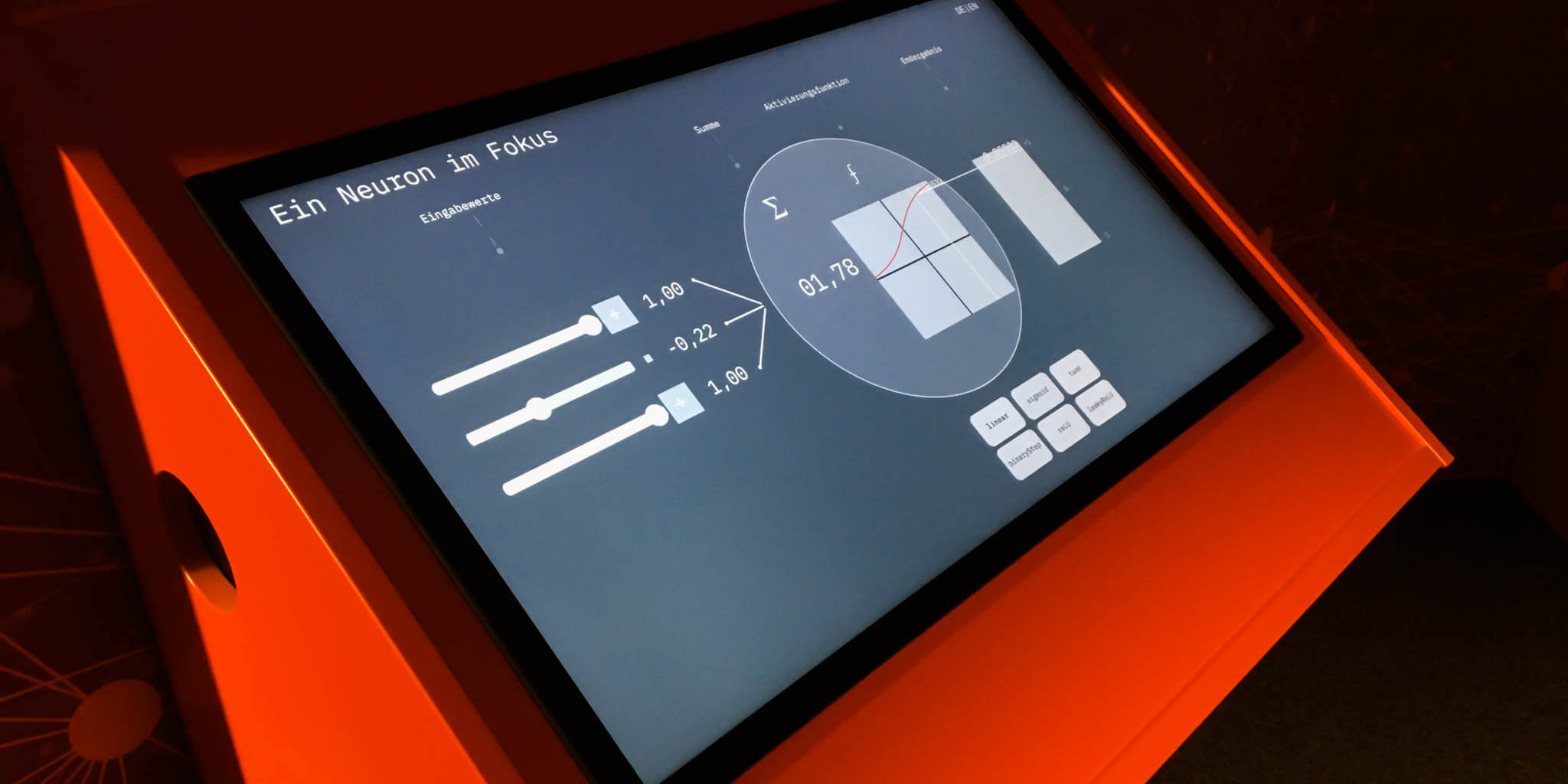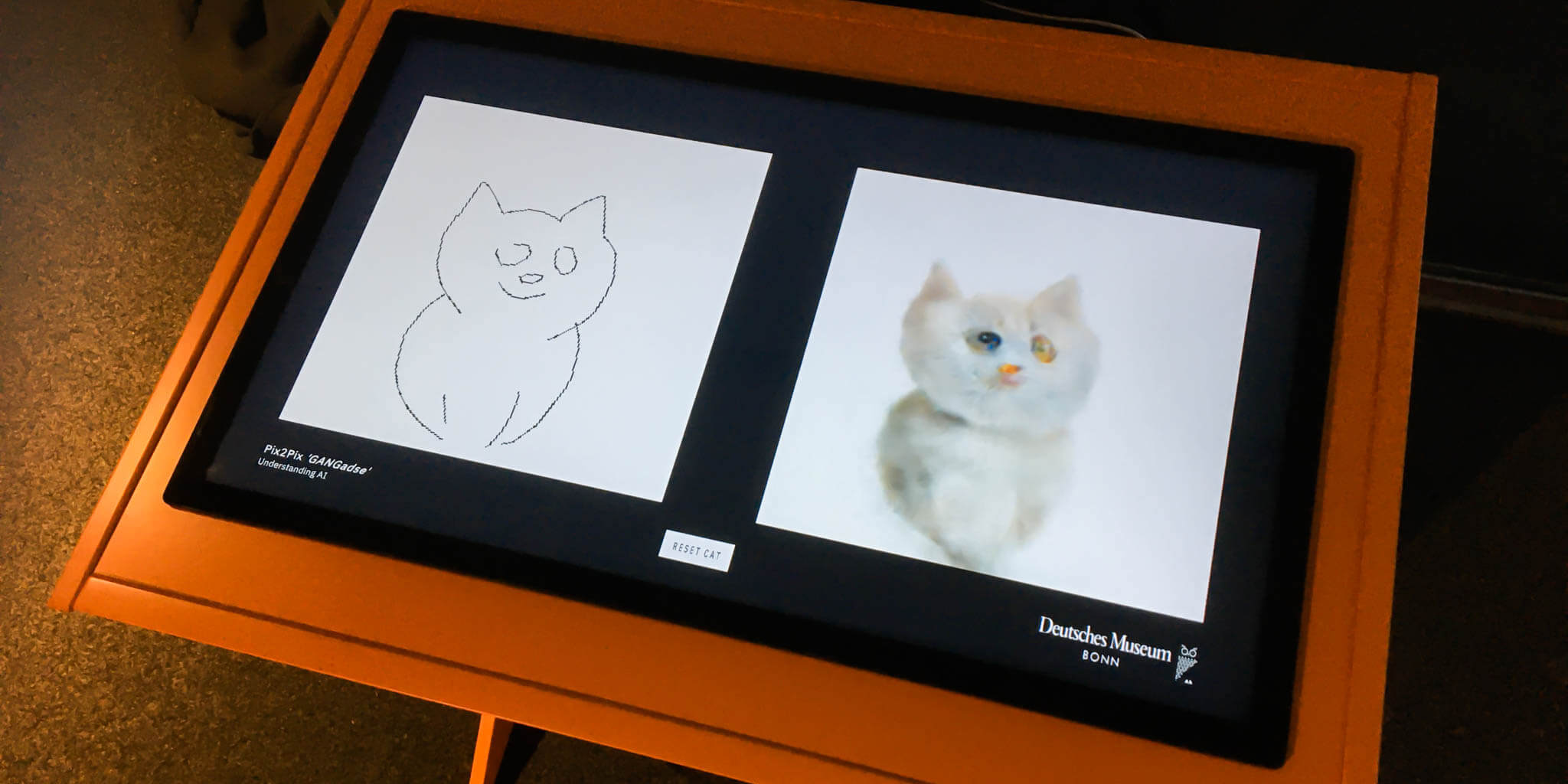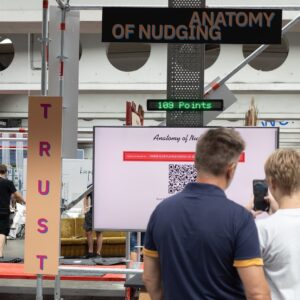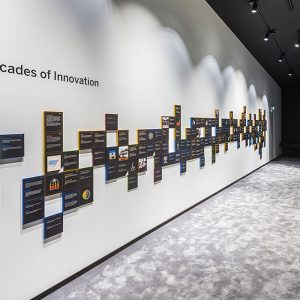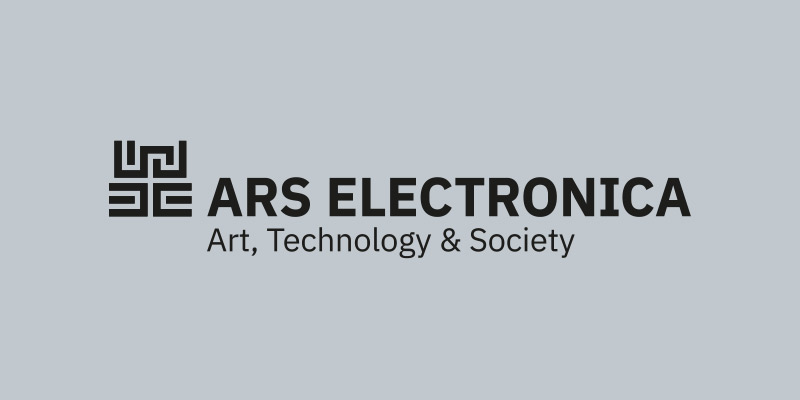In collaboration with the Ars Electronica Futurelab, the Deutsches Museum in Bonn is reinventing itself and becoming a central platform for the future topic of artificial intelligence: in two themed experience rooms, visitors to the Mission AI exhibition can now experience the key technology of the 21st century there as well.
It is sometimes difficult to understand that “artificial intelligence” consists merely of cryptic code. Hardly any other technology currently leaves us as perplexed as new developments in the field of AI. A basic understanding of these computer systems should help us to classify their potential and better make necessary everyday decisions. How much power do we want or should we give to algorithms in the future? – There are no simple answers to complex questions about the benefits or dangers associated with artificial intelligence. But new knowledge about and personal experience with the technology of the future can navigate us through the complex minefield of this social debate.
In addition to an AI experience room, which aims to open up the complexity of the topic and unravel common myths surrounding artificial intelligence, Mission KI also offers visitors a space for self-experience with various KNNs (artificial neural networks). Those who want to observe a Convolutional Neural Network seeing and classifying can do so here. The AI education concepts Neural Network Training, Comment AI and Pix2Pix: GANgadze, as well as “CNN – What convolutional neural networks see,” were originally developed by the Ars Electronica Futurelab for the Understanding AI exhibition at the Ars Electronica Center. Also created at the Futurelab is Ricercar, a music composition system based on artificial intelligence. All of them are now on display in Bonn, where they invite visitors to try them out, marvel at them and join in the discussion – along with numerous other exhibits from the think tanks of other institutions.
AI education concepts from the Ars Electronica Futurelab
What is hidden behind the term Deep Learning, meaning the “training” of AI systems with data, is explained by the interactive AI experience exhibition with Neural Network Training: At this research station, you can train AI systems yourself. Gathering their own experience introduces visitors to this controversial topic and shows that it is the quality and nature of training data that is crucial for the “intelligence” of artificial computer systems. The focus automatically falls on the integrity and sense of responsibility of the “trainers” themselves, who control the system with their decisions.
The well-considered preparation of training data is therefore one of the most important steps in the field of “Machine Learning”. Comment AI can also be used to help train a future AI application in correct interpretation: Here, visitors classify comments collected in online forums of a newspaper: They decide in which category a comment should be classified. In this way, the AI learns over time to interpret word combinations itself.
That an artificially intelligent system not only sorts data but can even be creative is impressively demonstrated to visitors by Ricercar from the Ars Electronica Futurelab: the Deep Neural Network is capable of composing music on its own and serves as an intuitive interface between man and machine. A musical idea that is entered into or can be generated by the system itself is thus rediscovered. With the ability to control and personalize the system’s output, creative interaction with AI brings the benefits of artificial creativity to life.
In the AI installation Pix2Pix: GANgadze, on the other hand, simply every conceivable shape that a drawer can imagine seems to be closely related to a cat. How much fun one can have together with the AI system Conditional Generative Adversarial Network (cGAN), which was trained for this station exclusively with pictures of cats, this entertaining approach to AI makes clear quite quickly even to the very youngest AI researchers: the consistent attempt of artificial intelligence to interpret a fluffy cat into any drawing leads to an amusing game with the legendary future technology. This way, understanding is not difficult at all: AI can only interpret data on the basis of the information that it has been trained with beforehand.
Credits
Ars Electronica Futurelab Arno Deutschbauer, Samuel Eckl, Peter Freudling, Stefan Mittlböck-Jungwirth-Fohringer, Ali Nikrang, Erwin Reitböck, Julian Zauner
Deutsches Museum Bonn
Ähnliche Projekte
Tauchen Sie ein in unsere Arbeit
Interesse an ähnlichen Projekten? Folgende Projekte des Ars Electronica Futurelab stehen in Verbindung zu den Ideen und Konzepten dieser Arbeit. Einen Überblick über alle unsere Produktionen, Kooperationen und Projekte finden Sie in unserem Projektarchiv.


